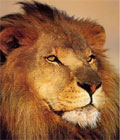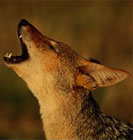

Kaffir
Folk-Lore
by Georg McCall Theal
Introductory
Chapter Regarding the Kaffirs
The
Story of the Bird That Made Milk
The
Story of the Girl Who Disregarded the Custom of Ntonjane
The
Story of Demane and Demazana
The
Runaway Children; or, The Wonderful Feather
The
Story of Ironside and His Sister
The
Story of the Cannibal's Wonderful Bird
The
Story of the Cannibal Mother and Her Children
The Story of the Girl and the Mbulu
The
Story of Long Snake
The Story of the Wonderful Horns
The Story of the Great Chief of the Animals
The Story of Lion and Little Jackal
The
Story of Long Snake
ONCE upon a time a certain girl left her father's place, and went to the village of Long Snake. Having arrived at the village of Long Snake she remained there, but the owner of the place was absent. The only person present was the mother of the owner of the place.
Then in the evening the mother of Long Snake gave that girl some millet, and told her to grind it. After it was ground she made bread. When it was ready the mother of Long Snake said: "Carry this bread into the house of Long Snake."
A short time after that girl went into the house, the owner of the place arrived. Then she gave him bread and fermented milk, and he ate. When they had finished the food they went to sleep. Then early in the morning Long Snake went away, because in the daytime he lived in the open country.
The girl went to the house of the parents of Long Snake. The mother of Long Snake clothed her with a very beautiful robe. After she was dressed she called for an axe, and went to cut firewood. Having arrived in the open fields she did not cut the firewood, but she threw away the axe and ran to her father's place.
When she arrived at her father's place, her sister asked for where she had got that beautiful robe. She told her, and her sister said: "I am going to that village too."
The girl said: "Just listen, and I will tell you the custom of that village."
But her sister said in reply: "I do not want you to tell me anything, because you yourself were not warned before you went."
Then she set off at once, and went on till she arrived in the evening at the village of Long Snake. When she sat down the mother of Long Snake gave her millet, telling her to grind it and make bread. When it was ready she took it into the house of Long Snake. Then in the evening the owner of the place arrived, and the girl gave him bread and fermented milk. When they had finished eating they went to sleep, and early in the morning Long Snake went away.
Then the girl went to the house of Long Snake's parents. His mother clothed that girl also in the same manner as she had dressed the elder one. Then she borrowed an axe and went to cut fuel. In doing so she made an excuse to run away.
On this day, however, the man went after his wives, and arrived at his father-in-law's place as the sun was setting.
They went out of the house that the bridegroom might sleep in it. While he was eating, the people of the village piled up bundles of grass, and the bridegroom was burned in the house. In this manner he died.
End Notes
These notes originally appeared at the end of the book and also appear on the Notes page of this ebook.
In this story the girls are represented as taking fermented milk to the man. This is not in accordance with ordinary Kaffir usage, which prohibits females from serving out milk. But Long Snake, though a man, has been bewitched and obliged to assume the appearance of a serpent, retaining however the faculties of a human being.
Kaffir women grind, or rather bruise, millet by putting it on a flat stone, before which the worker kneels, and crushing it with a small round stone hold in the hands. When several are working near each other of an evening, they usually lighten their labours by a rude chant. The bruised substance is mixed with water, and formed into small loaves of very insipid bread.
The text came from:
Theal,
Georg McCall.
Kaffir Folk-Lore. London:
S.
Sonnenschein, Le Bas & Lowrey, 1886.
Amazon.com:
Buy the book in paperback.
©Heidi
Anne Heiner, SurLaLune Fairy Tales
E-mail: surlalune@aol.com
Page last updated September 6, 2006
www.surlalunefairytales.com







